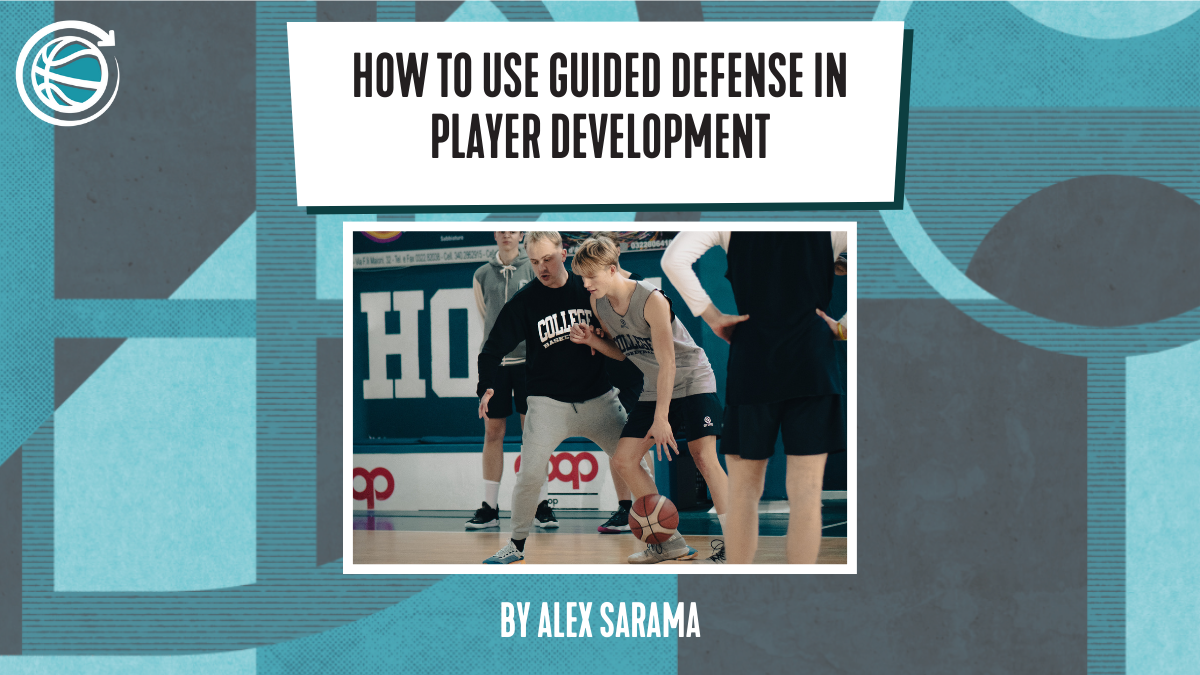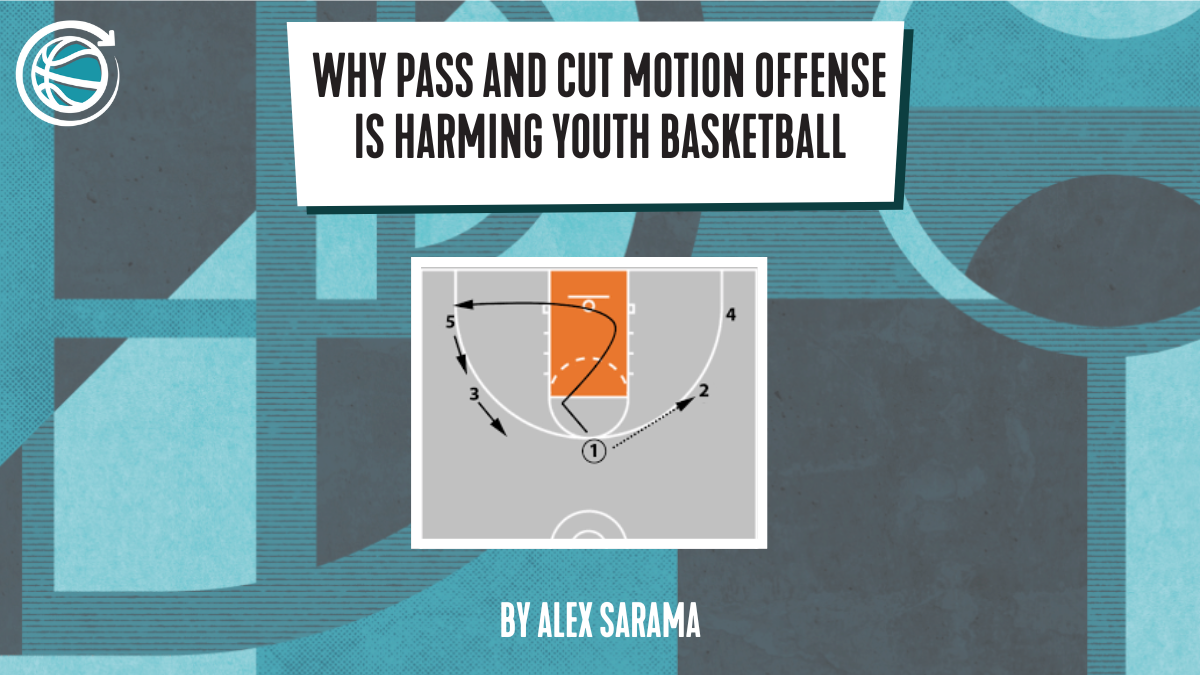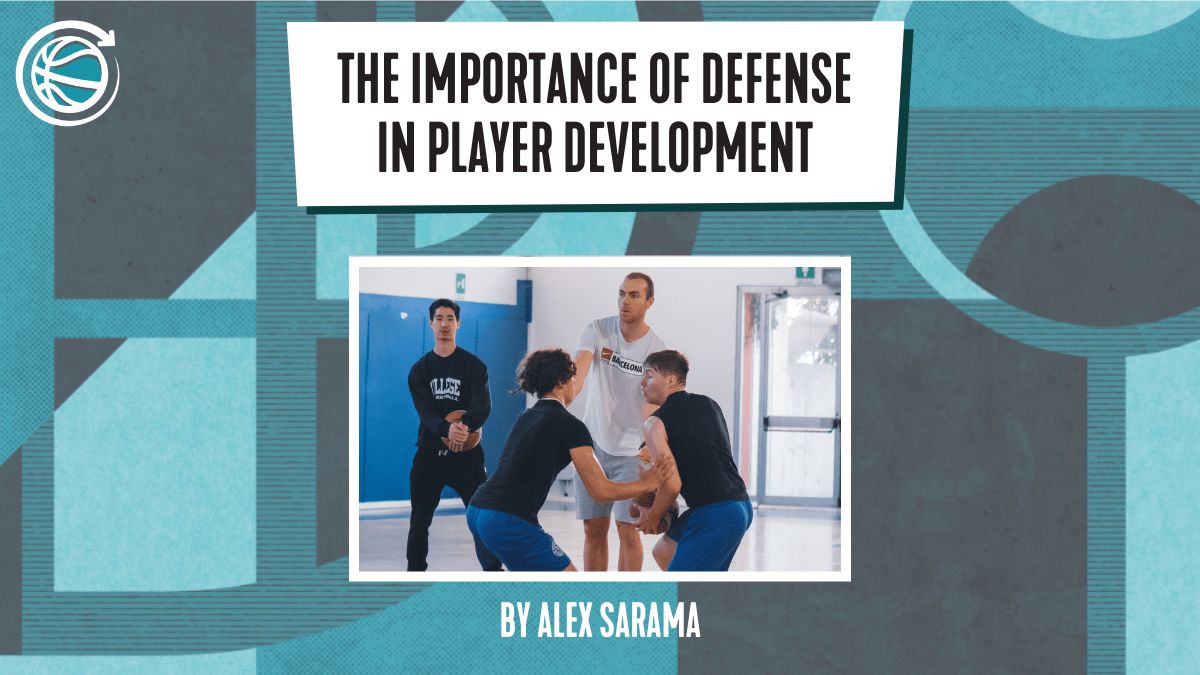How To Use Guided Defense in Player Development
Guided defense is when the defense is constrained in how they can defend an offensive player(s) within a particular sequence or possession. The goal of guided defense is for players to develop functional movement solutions for executing and using different coverages, while the offense can also explore various solutions for creating an advantage when faced by different types of defense.
On low stress days, guided defense is a great solution to avoiding monotonous forms of practice. pic.twitter.com/hKPthA93AR
— Transforming Basketball (@transformbball) November 22, 2023
Let’s take a blast cut as an example. A blast cut is a cut made from a double gap into a single gap. Guided defense could be used with one passer, one offensive and one defensive player staying in the same roles for three repetitions. The guided defender could be constrained to using three different coverages, but critically they must use a different coverage across each repetition.
A: Defense tries to deny the blast cut
B: Defense gaps on the catch after the blast cut is made
C: Defense shades towards the baseline or middle on the catch
The goal is to use different coverages in a surprising and unpredictable manner to the offense: e.g. C-A-B, B-A-C, A-C-B etc. The goal is not for the offense to use one “correct” solution when faced by each coverage, but rather explore different solutions that could be effective. For instance, shooting if the defender gaps could be an attractive affordance to act upon. However, another player might perceive the space as an opportunity to drive and build up momentum against the defender. Both solutions are equally affective as players perceive and act upon affordances in different ways.
For professional teams, guided defense is a fantastic way to move beyond the on-air practice styles which dominate the basketball industry. Without having to go fully live – something many professional coaches are wary of – guided defense is a great tool to practice more representatively without live play. If using guided defense with triggers at higher levels of the game, the guides can of course be implemented based on scout reports and the coverages players will encounter. Rather than just doing random coverages, coverages could be tweaked based on what will be anticipated when playing against upcoming personnel.
Learn about evidence-based player development strategies in basketball…
When playing live small-sided games, defenders may commonly resort to using the same solutions in order to try and win the game. Playing against live defenders is obviously a major advantage as opposed to isolated practice but without effective constraints, the defense is likely to self-organise to highly similar solutions. This means they may defend actions in whatever way they think gives them the best opportunity to ‘win the game.’ For instance, sagging off in youth basketball allows defenders to take advantage of the lack of shooting at this age group. By using guides effectively, it allows the offense to encounter affordances which simply may not happen in activities that are not as constrained.
Guided defense could be applied to any scenario, for instance:
- Post offense
- Perimeter drives
- Close-outs
- Triggers
DOWNLOAD OUR PLAYER DEVELOPMENT SSGs BOOK
When using guided defense, it is critical to coach the defense to ensure the cues given are accurate. This is something that Mike MacKay has consistently highlighted. This does not only allow for offensive solutions to emerge that will be more realistic within a real game, but also for the defense to learn about different ways they may be able to defend and how the offense may respond in an attempt to counteract this. Guided defense is therefore a huge part of developing adaptive defenders.
Guided defense is something that coaches can immediately implement into their practice design. It can be used in any activity: from 1-on-1 to 3-on-3 and 5-on-5. Coaches may wish to consider not rotating until a set number of reps have been completed, with the defense guiding and creating different affordances for the offense to act upon across each rep. This allows for a high level of time on task.
Guided defense can also be played either completely live or with a more passive defender. For instance, defenders can still give the guides but play completely live and attempt to steal or disrupt the offensive player at the same time. To begin using guided defense, it may be useful to reverse engineer and think of the triggers and offensive situation which your players need to become more skilful within (e.g. identifying their rate limiters). Think of at least three different ways the defense could guard each sequence.
If players really struggle against one coverage, that coverage could be scripted. This means the defense are only able to use one coverage. However, the offense must still find a functional solution with the defender pressuring them within that coverage. The offense could even be encouraged to explore a different solution against the same coverage across there different reps.
The most important consideration for coaches is to avoid telling the offense what to do against each guide/ coverage. The idea is that the guided defense accelerates self-discovery. If coaches tell the offense specifically what to do through using “either/or” decisions, it removes this opportunity. Additionally, there many solutions that could be effective within each scenario. Over-constraining players into just one solution can potentially pigeonhole their development and prevent them from exploring a solution which could have been more effective for them and their unique individual constraints/ action capabilities. What could be an effective solution for one player, may not be for another.
It is key to remember that guided defense is not playing “bad defense” for the sake of improving the offense. Using different coverages is actually a positive factor as opposed to a hindrance. It developed better defenders because of how players may realise how guarding an action one way results in offense countering it with another response. Guided defense works just as well when implementing sets and out-of-bounds plays as with player development. Instead of traditional 5-on-0, guided defense could be used to carefully attune the offense to different affordances that exist out of set plays.

Jul 8, 2024
Alex Sarama



